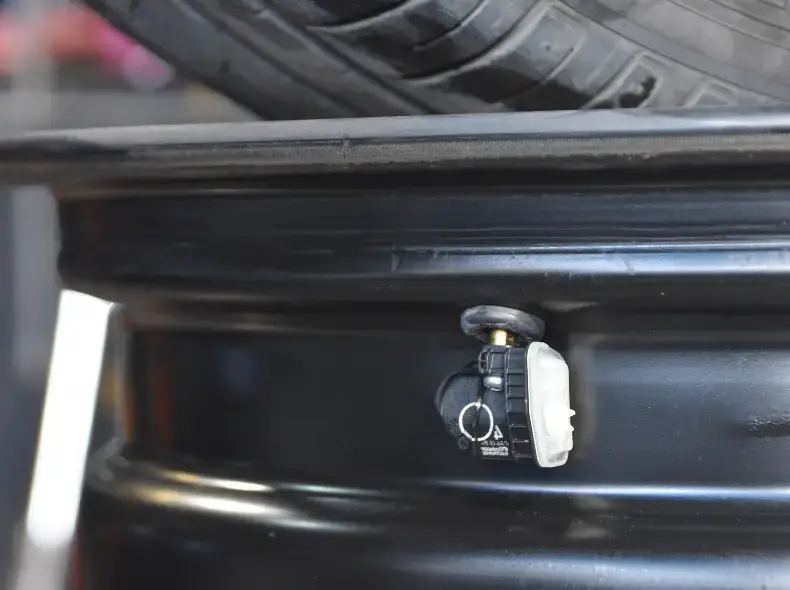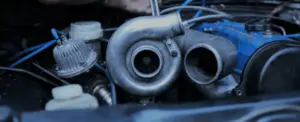This is a question that gets asked a lot. In an ideal world, we could pop a can of sealant into the tire valve pressed down on the applicator and the tire will be sealed permanently. If only life was that simple.
We’ll discuss the six main points concerning whether tire sealant is bad for tires or not.
Before we get into details, the main takeaway from this is that tire sealant can be good but only as a short-term solution, and we will explore the reasons below.
Tire Sealant Is Bad For Long Term Use
The most popular brand of tire sealant is called Slime. This product comes with various kits ranging from $25 to more than $100, but the mechanics are the same. Other brands use the same concept.
A hose attaches the Slime container to the tire valve stem while the compressor hose – to inflate the tire is attached to an inlet valve on the sealant bottle.
When the compressor – included in the most expensive kits – is turned on, the compressed air passes through the bottle picking up the chemicals and transferring it with the air into your tire that seals the puncture.
Slime state that you should only use their products in a tire for three days or 100 miles and that you use the yellow-labeled product. The red, blue, black, or green-labeled products they sell can seal a flat for up to two years but only on off-road vehicles or trailers.

Long-term use in car tires should be avoided as the chemical compounds binding together to stop the leak will not last very long. It is not designed to be used at high speeds as a long-term solution.
Tire sealant, therefore, is only recommended if you have no other option.
If you can get to a tire shop and get a patch and plug repair, you are far better off doing this straight away rather than using tire sealant for a couple of days and then going to a tire shop anyway.
Doing this will save you time and money
Tire Sealant Contains Hazardous Chemicals
The chemicals used in tire sealant are generally safe for both tires and humans.
When you bear in mind that all the chemicals inside a can are only extinguished through a hose into the tire, there is little scope for any person to be in contact with what’s inside the can.
Here is a product safety sheet for a tire sealant brand
Because the sealant is only meant to be inside a tire for three days, it will not cause any harm to the rubber during this time.
There is no evidence that the chemicals inside the sealant damage the tire, and in any case, a tire with a sealant used in a repair will fail far quicker than any chemicals that could affect rubber.
Tire Sealant Is Bad For TPMS Sensors
Yes and no.
Yes. Tire sealant has the pass through the small orifice in a TPMS sensor to enter the tire and plug the hole.
As the compound is made of very small fibers that bond together once in the tire, they will clog up a TPMS sensor and may cause the TPMS light to flash on and off.
No. Because tire sealant is water-soluble, it can be washed off using warm water. TPMS sensors can be cleaned gently with water either by yourself or the tire shop when it is taken for a more permanent repair.
They should get them back into working order and cause them no permanent damage. The sensor must be cleaned thoroughly; otherwise, it may give incorrect readings if any sealant residue is left.

Tire Sealant Badly Affects Wheel Rims
Some chemicals used in tire sealants are anti-rust and corrosion inhibiting, which in principle, should protect your rim or wheel from being badly affected.
Most tire sealant brands recommend that you do not use their products on rims or wheels that are already damaged in some way.
Unfortunately, they do not specify exactly what the rim damage is that you can’t use their products on.
However, it may be best to err on the side of caution on rims showing signs of corrosion, pitting, clearcoat peeling, or bubbling.
Tire Sealant Is Hard To Clean From Tires and Rims
Most tire shops do not like repairing tires that already have a repair.
Sometimes they will avoid touching tires plugged by someone at home. Others are not interested in cleaning out tire sealant from a tire and the TPS before they can get around to patching it for you.
Tire shops don’t earn much money from patching tires. Generally, they charge between $20 to $30 to patch a tire for you. This normally takes around 20 to 30 minutes.
However, if they then have to spend time washing away tire sealant, this increases the time they are working on your car. At the very least, they may charge you more for the extra time involved in cleaning out the rims and tires.
At worst, they will ask you before you get to the tire shop whether you have used the sealant and refuse to repair it in any case.
In Conclusion
If used correctly and for no more than three days or 100 miles, tire sealant can be a great option if you have no other choice.
Tire sealant can worsen damaged rims and clog TPMS sensors (although they can be cleaned with water).
Some tire shops won’t want to patch a tire that already has sealant used on it, while others will charge more to clean it out.
Tire sealants don’t cause damage to the inside of tires during the period they are intended to be used.



![Why Does My Tire Pressure Keep Going Low? [ANSWERED] INFLATING-FLAT-TIRE](https://carzaza.com/wp-content/uploads/2023/12/INFLATING-FLAT-TIRE-300x150.png)


![Tire Plug Vs Patch Cost [ANSWERED] tire-patched](https://carzaza.com/wp-content/uploads/2023/12/tire-patched-300x224.png)





